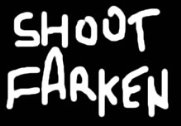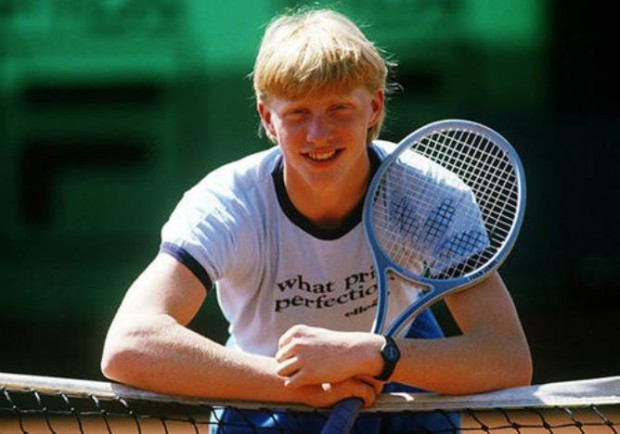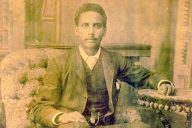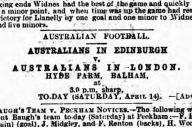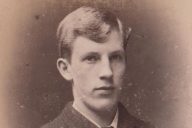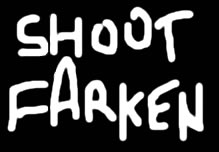Stan Wawrinka claimed his first Grand Slam title after conquering his nerves and dispatching one of the all-time tennis greats, Rafael Nadal, in the Australian Open final. Larry Schlesinger was at Rod Laver Arena to see Nadal beat that other titan of the modern game, Roger Federer, in the semi-final. It sparked some memories of his own relationship to the sport growing up in apartheid era South Africa and beyond.
It wasn’t the classic match I’d been hoping for, but it was still a thrill to sit under the lights at Rod Laver Arena and watch two of the modern-day greats, Roger Federer and Rafael Nadal, duel it out for a place in the Australian Open final.
Nadal was too aggressive, Federer made too many errors at the net with only the occasional glimpses of his sublime ground strokes, and it was all over in straight sets.
As I sat in the arena with Danni Minogue behind me, Pete Sampras chatting away in the distance (and never applauding a single point) and the great man, Rod Laver himself, watching intently with his distinctive mop of red hair and pointy nose, I thought about my own relationship with tennis and the role it’s played in my life.
Growing up in Germiston, a mining town about 30 minutes east of Johannesburg, we lived across the road from a Catholic convent and next door to the school’s tennis court. The nuns graciously gave us a set of keys and it was quite a novelty to have friends over and then head down to the courts to hit the ball around. The courts were cracked and the nets frayed and we frequently lost balls into the neighbouring homes, but it was our own private tennis club.
I was never much of a player, occasionally I’d string a couple of good shots together and fluke a serve down the line, but I’d have been a lower grade club player at best if I’d had lessons and practised. Still, there probably wasn’t a family holiday, where we didn’t take our rackets and have a game. I recall being rather competitive and not averse to smashing my racket against the ground and not always being the best loser.
More so though, my relationship with tennis revolved around the four majors – the Australian Open, the French Open, Wimbledon and the US Open, which seemed to define the calendar year and the seasons.
South Africa might have been isolated from the world in the mid-1980s, but every game was shown on SABC (the South African Broadcasting Corporation) with our legendary doubles champion Bob Hewitt waxing on in English about this shot and that and someone else providing the alternate Afrikaans commentary.
The French Open and Wimbledon were always my favourites – the former played on those bright red clay courts, with smartly dressed men and sexy, haughty European women in sunglasses watching from the stands (expertly picked out by the cameramen) while the umpire called the points in French.
They was probably the only words in French I knew:
“Zero – quarante” (Love – 40)
“Jeu” (Game)
“Quarante – trente” (40-30)
And my favourite, the oh so very sophisticated:
“Egalite” (Deuce)
I loved all the sliding across the red clay, the ability to see exactly where the ball landed in the court when a dispute was called and the long baseline rallies by the likes of Mats Wilander, Sergi Bruguera, Thomas Muster and the tiny, plucky Michael Chang and his famous win over Stefan Edberg in 1989 (where I seem to remember a point he served underhand).
But Wimbledon holds the strongest memories for me.
It was always played in the middle of winter in South Africa, crisp, days when the afternoon sun streamed in through the sliding doors of the living room and always while I was studying for mid-year exams. I remember I’d structure my study time – 40 minutes at my desk, then 20 minutes of tennis, which soon turned into 30 minutes and sometimes until my mother called the family over for dinner.
The men’s final evokes strong memories of family gatherings. Uncles and aunts and cousins would arrive for tea, cake and biscuits and then we’d all retire to the family room to watch the final. My father would invariably fall asleep (I have photographic evidence somewhere) but wake up in time for the trophy presentation by the Duke of Edinburgh.
One year was particularly special – 1985. I was 12 years old and a South African had made it all the way to the final. His name was Kevin Curren. He was a tall, awkward looking, softly spoken guy who blitzed the likes of McEnroe and Connors with an endless stream of aces and unplayable serves to power his way into the final against an unknown, unseeded 17-year-old German “wunderkind” called Boris Becker.
This was in the deep, dark days of apartheid isolation with only the likes of Gary Player and a few other individual sportsmen able to still represent our country on the global stage.
The nation held its breath that day as we prayed that our new sporting idol, Kevin Curren, would play one more storming match and give us our first Grand Slam champ since Johan Kriek won the Australian Open in the early 1980s.
Sadly it was not to be. The fresh-faced, precocious talent that was Boris Becker leaped onto the world stage on the hallowed grass of Wimbledon and tennis was changed forever. It was upsetting to see our hero lose, but the truth is I became an enormous fan of Boris Becker with all his theatrical dives at the net and that powerful, trigger serve of his.
In the subsequent years, I remember the three Wimbledon finals between the raging, tearaway “Boom Boom” Becker and the cool elegant Swede, Stefan Edberg between 1988 and 1990 as among the most thrilling of my young adult life.
Later, while living in London, I was lucky enough to attend Wimbledon a couple of times, taking the train after work, queuing up for five-pound tickets and wandering around the famous courts, indulging in some rather disappointing strawberries and cream and sitting on what was then called “Henman Hill” (now called Murray Mound) in the long summer days.
In 2004, I slept over at a mate’s house in Croydon and we awoke at 4am to queue early for tickets for one of the show courts.
We got to watch a young, very attractive talent by the name of Maria Sharapova on her way to her first Grand Slam, but the highlight was watching the panther-like Roger Federer on his way to his second of seven Wimbledon Crowns.
And this week I got to see him again in the twilight of perhaps the greatest of tennis careers.
To inappropriately quote Eric Clapton and Cream: “Anyone for tennis, wouldn’t that be nice?”
You can read more of Larry Schlesinger’s writing on his blog, Freshly Worded.
